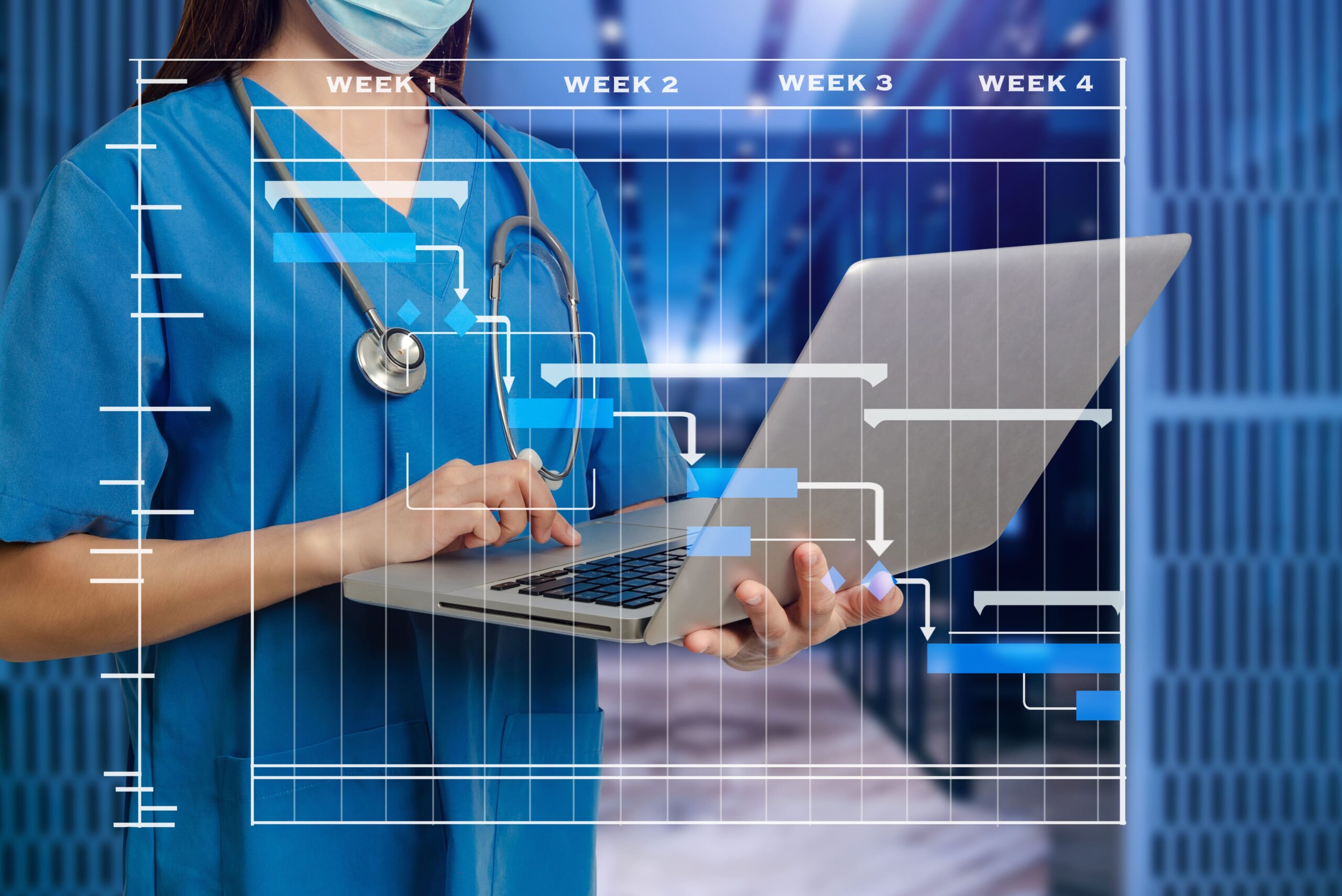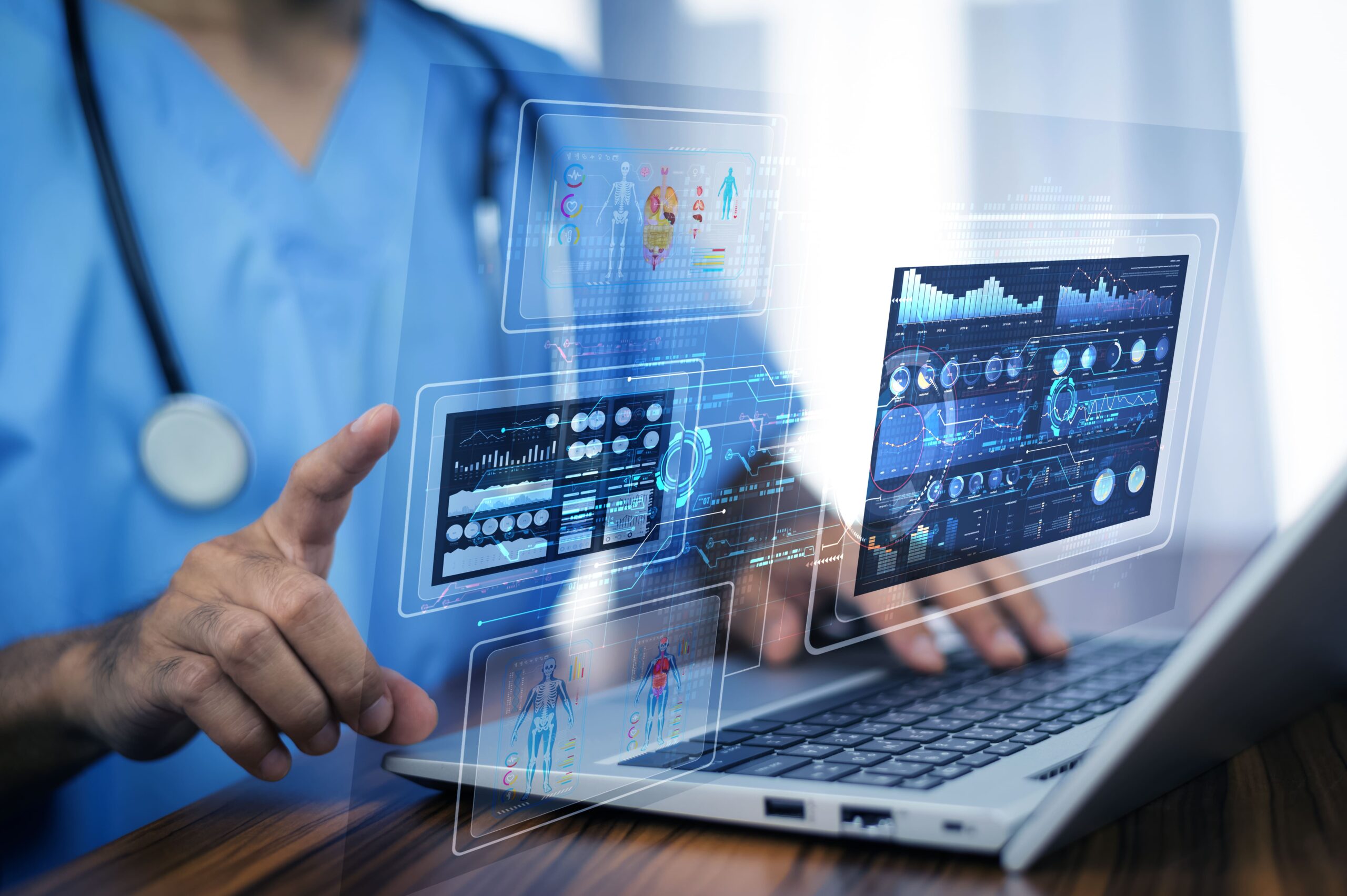Healthcare software modernization is crucial to address inefficiencies, security risks, and integration issues with outdated systems. This article provides practical tips and real-world examples to guide you through the modernization process, showing how it can enhance patient care, improve operational efficiency, and ensure data security.
Key Takeaways
– Modernizing healthcare software is crucial for improving patient care, ensuring data security, and enabling interoperability, which are essential for effective healthcare delivery.
– Key benefits of modernization include enhanced operational efficiency through automation, improved patient care via real-time data access, and long-term cost savings by reducing maintenance expenses.
– A structured modernization approach involves assessing current systems, choosing the right technology stack, implementing data migration strategies, and overcoming challenges such as resource management and staff training.
Why Modernizing Healthcare Software is Essential
Healthcare organizations are more aware of the necessity to modernize their legacy systems. These outdated systems frequently face significant system integration challenges, making it hard to connect with newer applications and technologies. This connectivity gap can result in operational inefficiencies and potential harm to patient care, as vital information may not be readily accessible. Additionally, maintaining these outdated systems can divert critical funds from patient care initiatives, further exacerbating the problem.
Beyond operational challenges, healthcare legacy systems often suffer from inadequate security measures and lack of support, making them vulnerable to cyber threats. The constant risk of security vulnerabilities and stagnant functionality poses significant threats to patient data and overall system integrity. Modernizing healthcare software goes beyond improving functionality; it involves safeguarding sensitive patient information and ensuring compliance with continually evolving regulatory demands.
The consequences of not upgrading systems extend beyond inefficiencies. Outdated healthcare technologies limit the implementation of advanced solutions like AI and predictive analytics, which are crucial for improving patient outcomes.
Modernizing healthcare software enhances scalability, reduces costs, and improves patient management, making it a critical step for any forward-thinking healthcare organization.
Types of Legacy Healthcare Systems
 Legacy healthcare systems encompass a range of outdated healthcare software applications and technology platforms that are still in use despite their limitations. These systems often include electronic health records (EHR), laboratory information systems (LIS), radiology information systems (RIS), hospital information systems, and legacy systems in healthcare.
Legacy healthcare systems encompass a range of outdated healthcare software applications and technology platforms that are still in use despite their limitations. These systems often include electronic health records (EHR), laboratory information systems (LIS), radiology information systems (RIS), hospital information systems, and legacy systems in healthcare.
Recognizing the specific types of legacy systems and their unique challenges is vital for effective modernizing legacy systems of a modernized system.
Electronic Health Records (EHR)
Early electronic health record (EHR) systems were primarily designed to maintain simple patient records, lacking the advanced functionalities that modern EHRs provide. These outdated systems often suffer from antiquated interfaces and incompatibility issues, severely hindering their effectiveness. The lack of interoperability and user-friendly interfaces makes it difficult for healthcare professionals to navigate and utilize these systems effectively, impacting both user experience and operational efficiency.
Modernizing EHR systems enhances user experience, enables interoperability, and boosts operational effectiveness. For example, Mayo Clinic’s transition to a modern EHR platform aims to improve interoperability and integrate seamlessly with other healthcare systems, thereby enhancing uptime and facilitating rapid access to critical data
Laboratory Information Systems (LIS)
Laboratory information systems (LIS) often encounter significant issues related to data standardization and integration with newer diagnostic technologies. Outdated LIS systems have difficulties with adopting standardized data formats, which hampers their integration with newer diagnostic tools.
Updating these systems boosts performance, scalability, workflow efficiency, and communication within laboratory operations.
Radiology Information Systems (RIS)
Older radiology information systems (RIS) often suffer from numerous limitations that can impede their functionality. A major limitation is the lack of integration with other systems, causing issues like duplicate data entry and billing errors.
Additionally, these systems frequently lack features for automatic scheduling, complicating workflow management and reducing efficiency.
Key Benefits of Modernizing Healthcare Software
Modernizing healthcare software offers a myriad of benefits, from improved operational efficiency and enhanced patient care to significant cost savings. Organizations using modernized systems can significantly enhance their operational efficiency and patient care quality, making modernization an essential step for any healthcare provider.
Improved Operational Efficiency
Automation in administrative tasks helps healthcare organizations reduce errors and improve operational efficiency. Modern systems can significantly reduce administrative workloads by automating tasks such as scheduling, billing, and patient record management.
Modern EHR systems incorporate advanced functionalities and ensure seamless data sharing through interoperability. This is essential for effective healthcare delivery, enabling smooth communication between various healthcare systems.
Enhanced Patient Care
Real-time data access through modern systems enables healthcare providers to make timely decisions, improving patient outcomes and personalized care. Implementing AI-driven advanced data analysis further supports informed decision-making.
The Internet of Medical Things (IoMT) connects devices for real-time health monitoring, enhancing patient care and reducing hospital visits. With the increased connection of medical devices, SOC 2 compliance becomes essential for safeguarding sensitive health data and ensuring secure patient care.
Cost Savings
Healthcare organizations can realize long-term financial savings through modernized systems. Updating legacy systems can result in significant long-term savings by eliminating high maintenance costs and reducing operational errors, ultimately impacting healthcare costs positively. Additionally, implementing revenue cycle management systems can further enhance financial efficiency.
Modern systems contribute to cost savings by reducing paper records and minimizing manual data entry, leading to a decrease in operational errors.
Steps to Modernize Healthcare Software
 A structured approach is crucial for effective healthcare software modernization, involving assessment of current systems, selection of the right technology stack, and ensuring a smooth software development data migration process.
A structured approach is crucial for effective healthcare software modernization, involving assessment of current systems, selection of the right technology stack, and ensuring a smooth software development data migration process.
Assess Current Systems
The first step in modernizing healthcare software is to assess the current systems in use by evaluating functionality, identifying problems, and understanding user needs. An effective IT audit should analyze hardware, software, age, performance, compatibility, and security vulnerabilities. Evaluating the age and compatibility of existing systems is critical in the IT audit process.
Engaging stakeholders aligns modernization efforts with actual needs and expectations. Systems should be prioritized based on:
– Their impact on patient care
– Operational efficiency
– Regulatory compliance
– Patient engagement
The assessment phase should produce a detailed report outlining:
– Findings
– Risks
– Recommendations for modernization.
Choose the Right Technology Stack
Selecting the appropriate technology stack is vital for a seamless digital transformation process. Healthcare organizations should evaluate modern technologies for their scalability and security features.
Factors influencing the choice of modernization strategy include evaluation, objectives, and specific needs.
Data Migration Process
A significant challenge in data migration is ensuring data accuracy, completeness, and integrity. Specialized data management migration tools and thorough preparation are essential to ensure data integrity during migration.
A well-structured data migration plan should include backups and data governance frameworks. Verifying the consistency and accuracy of the data after migration is crucial.
Integration Strategies for Modernizing Healthcare Systems
Outdated healthcare systems often face interoperability problems, hindering comprehensive seamless data exchange within the healthcare communications infrastructure and communication systems.
Popular methods for integrating legacy systems include using middleware and APIs.
Middleware Solutions
Middleware facilitates communication between new and old systems, ensuring data exchange. Middleware can bridge gaps between various data sources and address data silos.
Addressing data silos in older systems is essential for achieving a unified view of patient data through seamless integration.
API Integration
Utilizing APIs in healthcare software integration enhances connectivity between contemporary and legacy applications. Implementing an internal API layer allows modern interfaces to interact seamlessly with existing legacy systems.
Overcoming Challenges in Healthcare Software Modernization
 Legacy healthcare systems struggle with interoperability, impacting data exchange and operational efficiency. Solutions to challenges in healthcare software modernization and healthcare legacy systems modernization include effective budgeting, resource allocation, and training programs.
Legacy healthcare systems struggle with interoperability, impacting data exchange and operational efficiency. Solutions to challenges in healthcare software modernization and healthcare legacy systems modernization include effective budgeting, resource allocation, and training programs.
Managing Costs and Resources
Healthcare facilities frequently operate under strict financial constraints, complicating upgrade processes. To manage implementation costs, invest in impactful features, consider phased implementation, and explore cloud solutions.
Training and Adoption
A tailored training program for healthcare staff and medical professionals should include ongoing support for effective adaptation to new systems. Essential components include catering to different skill levels, hands-on practice, and continuous support.
Ensuring Regulatory Compliance
Healthcare organizations must comply with strict healthcare regulations like HIPAA and GDPR during software modernization. Robust cybersecurity measures, including data encryption, are essential to protect sensitive data and maintain data security compliance.
Real-World Examples of Successful Modernization
Modernizing healthcare systems in the healthcare sector improves operational efficiency and patient care, as demonstrated by healthcare organizations modernize the modern healthcare industry through healthcare system modernization.
Mayo Clinic’s EHR Platform Upgrade
Mayo Clinic migrated from EHR systems provided by Cerner and General Electric to Epic, investing $1.5 billion in the process. This modernization project aims to improve interoperability and integrate seamlessly with other healthcare systems.
Cleveland Clinic’s Telemedicine Transformation
Cleveland Clinic increased telehealth service access from 2% to 75% in just two weeks. The adoption of telemedicine has streamlined access to care, especially for patients in rural areas or those with difficulty accessing healthcare facilities.
Future Trends in Healthcare Software Modernization
Emerging technologies like AI, machine learning, and cloud computing are revolutionizing healthcare software. AI and machine learning enhance diagnosis accuracy and personalize treatment plans. Cloud computing facilitates collaboration among healthcare professionals and supports personalized medicine.
Virtual reality is being utilized in medical training and patient treatment, improving surgical outcomes and pain management. Machine learning enhances medical imaging technologies, like X-rays and MRIs, improving diagnostic capabilities. Technology solutions such as Angular development services can also play a role in creating secure and scalable healthcare applications.
Summary

Modernizing healthcare software is essential for improving operational efficiency, enhancing patient care, and ensuring regulatory compliance. The steps outlined in this guide, from assessing current systems to choosing the right technology stack and ensuring a smooth data migration process, provide a comprehensive roadmap for healthcare organizations.
The real-world examples of Mayo Clinic and Cleveland Clinic demonstrate the tangible benefits of modernization. Embracing future trends like AI, machine learning, and cloud computing will further revolutionize healthcare, providing doctors and nurses with the best tools for optimal patient care. The journey to modernization may be challenging, but the rewards are well worth the effort.

Leave a Reply